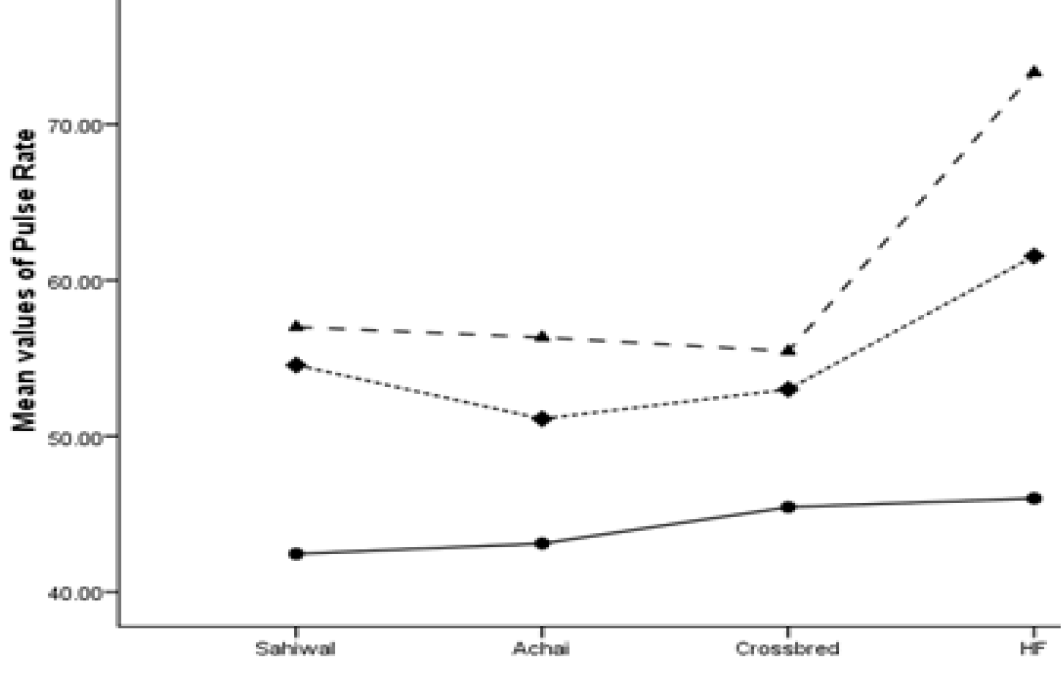Crossbred Cows Respond Differently from Holstein Frisian and Bos Indicus to Heat Stress Under Various Climatic Conditions
Crossbred Cows Respond Differently from Holstein Frisian and Bos Indicus to Heat Stress Under Various Climatic Conditions
Ikramullah Khan1,2*, Muhammad Subhan Qureshi2, Sohail Akhtar2, Ijaz Ali3 and Ghufran Ullah4
Effect of various ambient temperatures on rectal temperature in various dairy cattle breeds (● 18 °C, ♦ 32 °C, ▲ 42 °C).
Effect of various ambient temperatures on respiration rate in various dairy cattle breeds (● 18 °C, ♦ 32 °C, ▲ 42 °C).
Effect of various ambient temperatures on pulse rate in various dairy cattle breeds (● 18 °C, ♦ 32 °C, ▲ 42 °C).
Effect of various ambient temperatures on serum glucose level in various dairy cattle breeds (● 18 °C, ♦ 32 °C, ▲ 42 °C)
Effect of various ambient temperatures on serum cortisol concentrations in various dairy cattle breeds (● 18 °C, ♦ 32 °C, ▲ 42 °C).
Effect of various ambient temperatures on HSP-70 concentrations in various dairy cattle breeds (● 18 °C, ♦ 32 °C, ▲ 42 °C).














